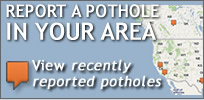The record level of snowfall along the eastern corridor at the end of October 2011 caused enough damage on its own. Millions of homes and businesses went without electrical power as a result of downed power lines. As fall turns into winter, we’re reminded that where nature intersects with civilization, man-made things have a tendency to fall apart.
This snowstorm did the region the disfavor of arriving while the leaves where still on the trees. Those leaves caught more of the wet snow, which then burdened branches that broke and fell on electrical power lines. The lines broke and power was cut off on a massive scale: 830,000 customers in Connecticut were out at the peak, as were 483,000 in Massachusetts, 380,000 in New Jersey and 300,000 in New York State. In Maine, 160,000 customers lacked electricity, as did 315,000 in New Hampshire, 43,000 in Maryland, 200,000 in Pennsylvania, 20,000 in Rhode Island and 7,500 in Vermont.
The early arrival of winter was due to an easily understood Nor’easter, where a mix of warm ocean met up with an eastward-moving cold front. It all arrived just a little earlier this year. There were warnings earlier in the week, when the same weather system pulled temperatures down in Colorado from 82 degrees (F) on Monday to 32 degrees by Wednesday. Temps weren’t quite so low as the system just dumped rain on the Mississippi Valley region (Chicago and St. Louis in particular). But when it reached the mid-Atlantic coast and off the coast of New England, the cold air mixed with the moisture to circle back over land – leading to as much as a 32-inch snowfall in parts of Massachusetts. In New York City’s Central Park, the first-ever snowfall of one inch-plus in October was recorded.
All of this is just a clear reminder that snow will come, as will cold temperatures. Power lines will continue to fall in ice storms and heavy snow. But what is particularly damaging to roads – what causes potholes – are two factors: moisture (precipitation) and temperature fluctuation, above and below the freezing point (the freeze-thaw cycle).
Those cycles typically happen in February, March and April in much of the country. In coastal areas such as eastern Massachusetts, Connecticut, Rhode Island and New York, those oscillations can be more frequent in those months. But in freak storms such as this, it can happen in the fall as well.
Drivers need to be cautious about icy patches and bridge roads that freeze before pavement on solid ground. And, they should add to that to look out for seasonal potholes as well.





